UK: Alai Bee Hawkmoth
Haemorrhagia tityus alaiana Rothschild & Jordan, 1903, Novit. zool. 9 (Suppl.): 451.Type locality: Alai Mountains [Alayskiy Khrebat, western Tian Shan, Tajikistan.]
(Taxonomic notes. (i) Derzhavets (1984) considered Hemaris alaiana to be merely a form of Hemaris tityus (Linnaeus, 1758), at best a subspecies. However, Eitschberger & Churkin (2002) quite rightly treated alaiana as a distinct species. Comparison of both male and female genitalia (Eitschberger, 1999) indicate that this species is related to the eastern palaearctic Hemaris radians (Walker, 1856), having probably evolved from an isolated population.
(ii) Male genitalia very similar to Hemaris tityus, but right harpe apically broader and more strongly spatulate; phallus shorter. In the female genitalia, most similar to Hemaris radians in having a funnel-shaped antrum (the antrum is approximately square in outline in Hemaris tityus).
(iii) The species described in Eitschberger et al. (2005) as Hemaris molli (a single female from near Irbid, northern Jordan) looks superficially like Hemaris fuciformis (Linnaeus, 1758), although the illustrated example lacks the dividing line of scales in the forewing cell. Intriguingly, the corresponding genitalial preparation was noted as being close to that of Hemaris radians from the eastern palaearctic. Further studies, including DNA barcoding, have demonstrated that Hemaris molli is, in fact, an example of Hemaris alaiana. This raises an interesting question. The individual could be a mislabelled specimen from Central Asia or represent an isolated population resident in the Levant. The latter is unlikely as H. alaiana has been found to be an alpine species (Serge Yevdoshenko, pers. comm. 2019). This requires further investigation.)
Holarctic; western Palaearctic region. Pleistocene refuge: Monocentric -- northern section of Sindian refuge.
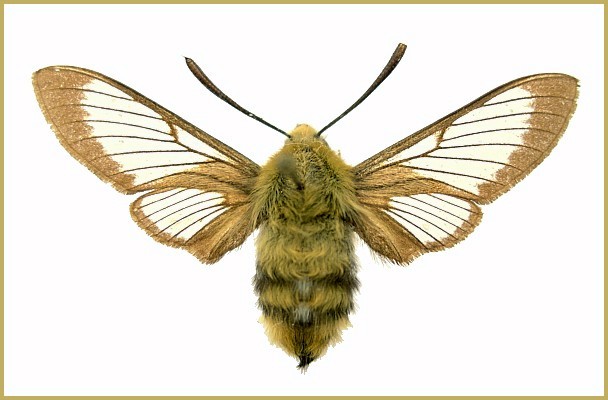
Wingspan: 35--45mm. According to Rothschild & Jordan (1903), black belt of abdomen much shaded with yellowish hairs, tail scarcely with any yellowish hairs; thorax and posterior abdominal segments less bright yellow than in Hemaris tityus. Border of forewing noticeably broader than in Hemaris tityus, as broad between R3 and M1 as this cellule is wide at end; cross-veins with an obvious bar, which is nearly as prominent as in Hemaris affinis (Bremer, 1861). Base of hindwing above and below less yellow than in Hemaris tityus, border noticeably broader.
Diurnal. According to Eitschberger (1999), an insect of montane meadows and woodland glades rich in flowers, where it flies with Hemaris fuciformis; generally found at 1400-2200m altitude. However, Serge Yevdoshenko (pers. comm. 2019) disputes this and has discovered that Hemaris alaiana is a true alpine species and that Eitschberger must have confused worn specimens of Hemaris tityus with this species. Hemaris alaiana inhabits open, sunny, grass-poor, forb-rich, rocky alpine slopes between 2600 and 3200m altitude in Kyrgyzstan (e.g. Kyrk-Kyz Pass), a habitat it shares with species of Parnassius (Toropov, Milko, Zhdanko & Evdoshenko, 2023). These can be quite warm by day, but often fall below freezing at night.
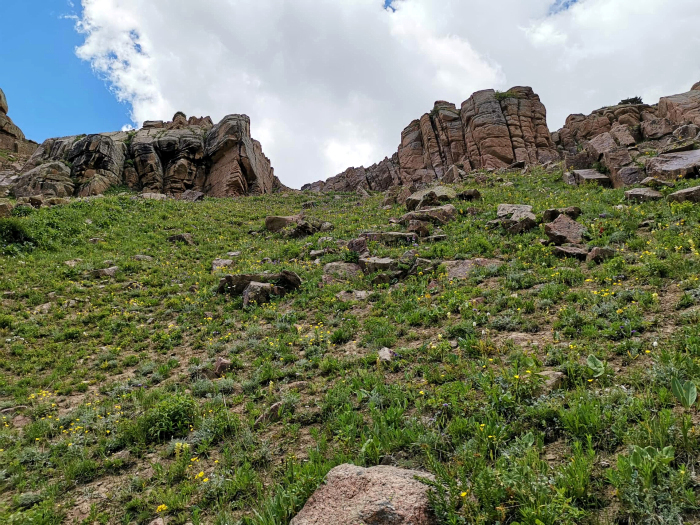
Early June to mid July (Eitschberger, 1999; Serge Yevdoshenko, pers. comm. 2019).
OVUM: Small, whitish-green, oval. Laid at the base of leaves, usually on the petiole (Serge Yevdoshenko, pers. comm. 2019).
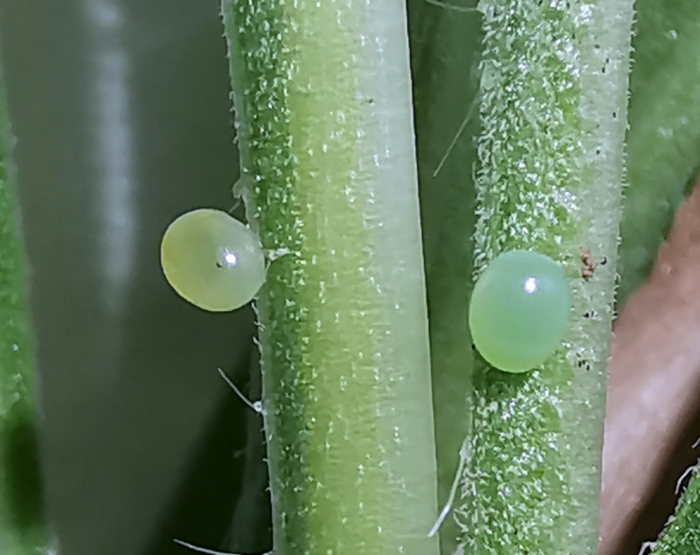
LARVA: Newly hatched larvae (3mm) are entirely creamy-white, with a short, erect horn. Covered with widely spaced black bristles, those dorsally double-hooked. With growth the predominant body colour becomes khaki/glaucous-green, including the short horn and head. Entire body very granulose. A pale dorso-lateral line runs from head to horn on both sides. In the final instar the dorsal area between these two lines may become reddish-brown (more so along the upper edge of the dorso-lateral lines), with patches of the same colour sometimes appearing around the orange-centered white spiracles and on the horn. True legs and prolegs tinged with brown; the short, granulose horn always reddish (Serge Yevdoshenko, pers. comm. 2019).
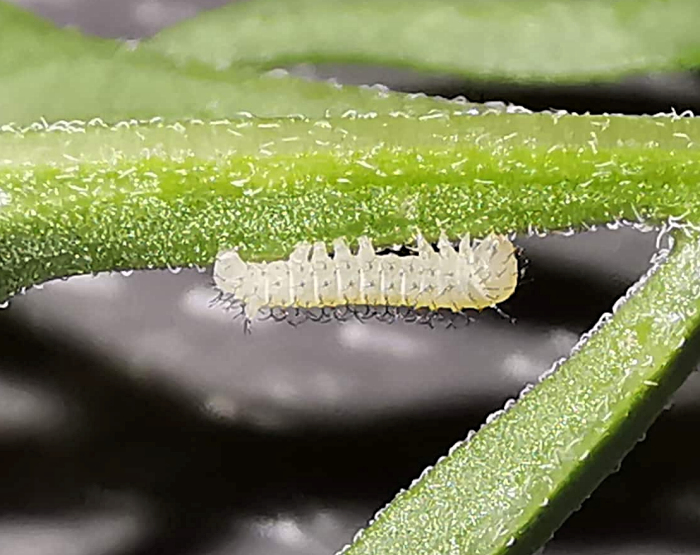
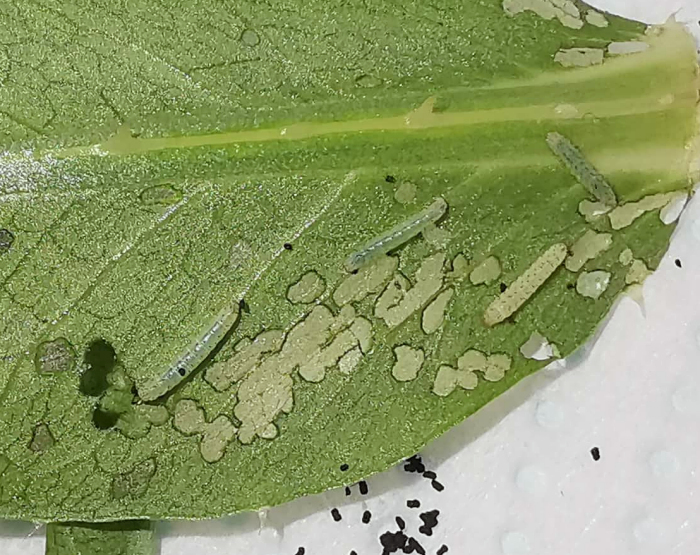
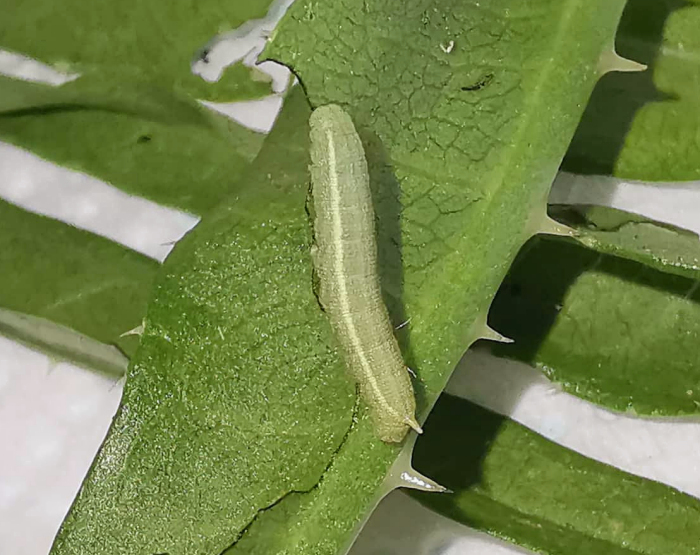
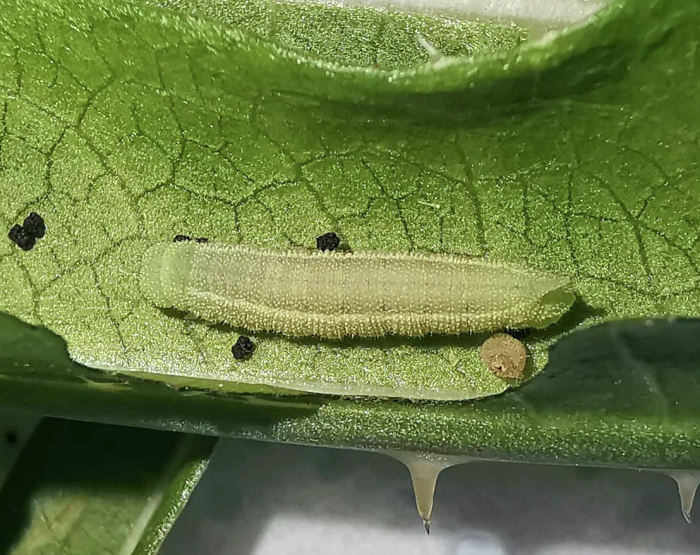
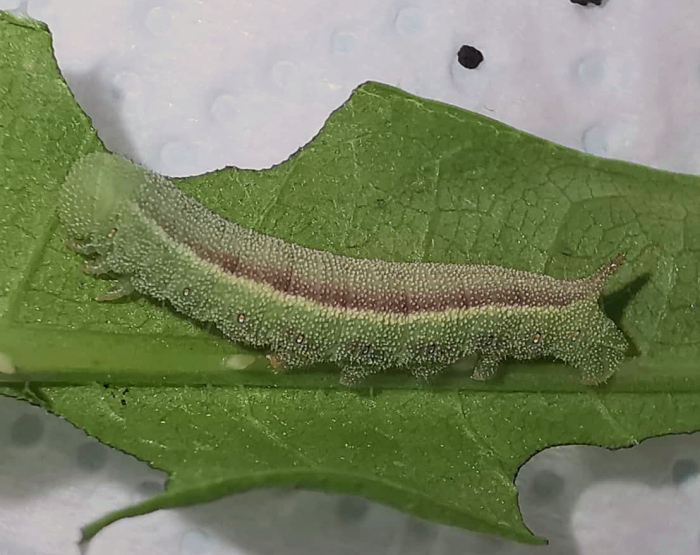
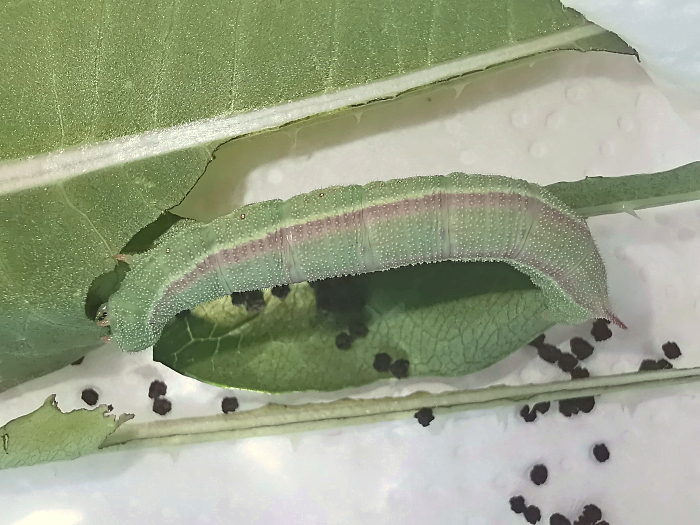
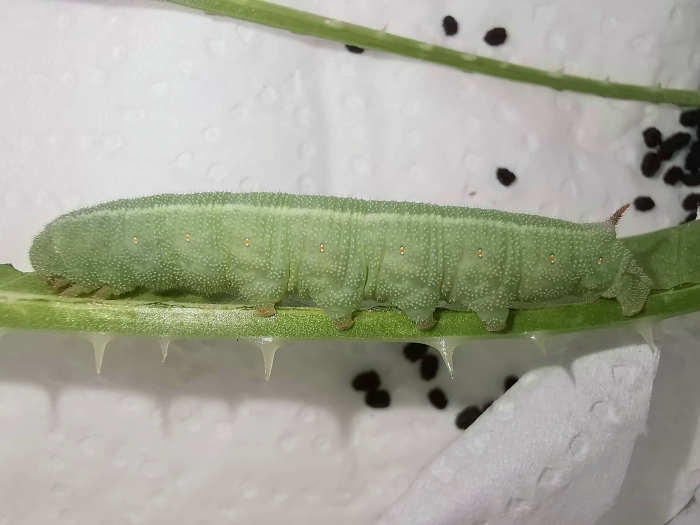
Hostplants. In the wild on alpine species of Scabiosa, e.g. Scabiosa songarica Schrenk and Lomelosia alpestris [syn. Scabiosa alpestris] (Toropov, Milko, Zhdanko & Evdoshenko, 2023). European species were refused in captivity, with only Dipsacus being accepted (Serge Yevdoshenko, pers. comm. 2019).
PUPA: Unknown.
None recorded.
Endemic to the Alayskiy Khrebat, Tian Shan, Dzhungarskiy Alatau, Saur and Altai Mountains, from Tajikistan (Rothschild & Jordan, 1903) and eastern Kazakhstan (Eitschberger, 1999) across Kyrgyzstan (Serge Yevdoshenko, pers. comm. 2019; Toropov, Milko, Zhdanko & Evdoshenko, 2023) to western Mongolia (Yakovlev & Doroshkin, 2005; Yakovlev, 2011).
There is also the possibility of a disjunct population in northern Jordan (Eitschberger et al., 2005) (see 'Taxonomic note (ii)' above)).
Extra-limital range. None.
None.
 Return to species list
Return to species list